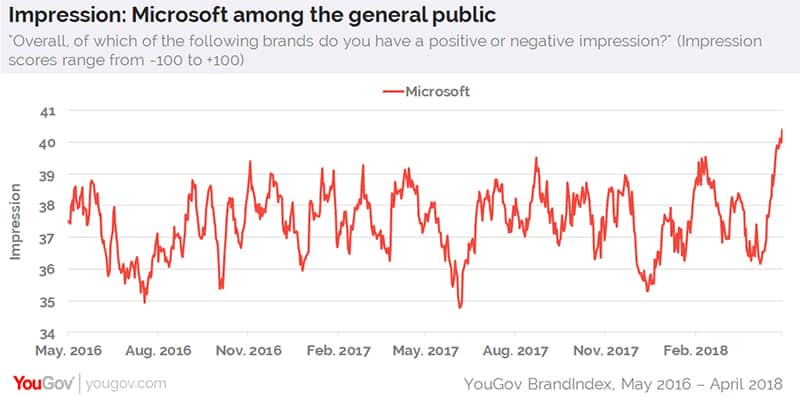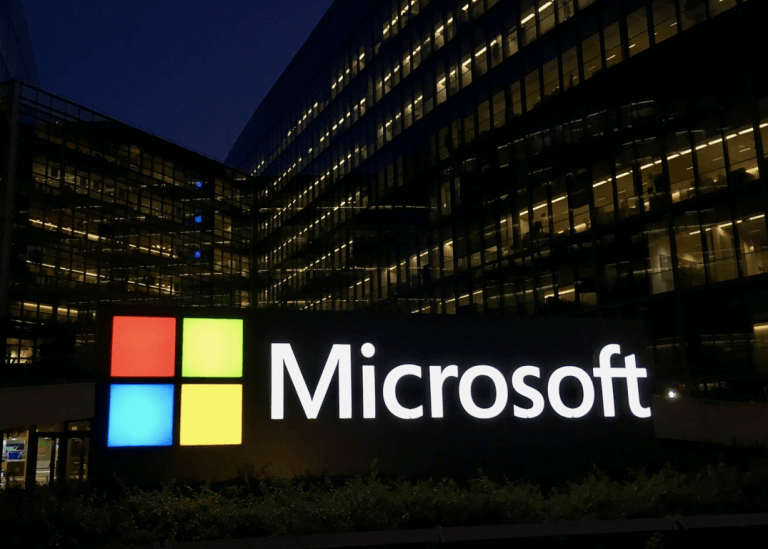It has been a while since Microsoft and young consumers have met on favorable grounds, well directly at least. Sure, Microsoft has kept a rather substantial foot in education with software and services such as OneNote, Office, and Microsoft Enrollment for Education, but these projects are usually seemingly hoisted upon unsuspecting students.
For the last decade and a half, most young consumers have sought out products and services from Microsoft’s competitors such as Apple and Google while only harboring mild disdain for Microsoft solutions, but it looks like the company may be garnering enough cool cache to turn the heads of millennials.
According to YouGov, that Microsoft has, over the years, been able to muster a more positive impression of itself with consumers.
Microsoft’s Impression score — which asks consumers if they have an overall positive or negative impression of a particular brand — has reached its highest point in the last two years, according to new data from YouGov BrandIndex. In the past few weeks alone, after Nadella announced major plans to reorganize the company and amid the latest Windows update, Microsoft’s Impression score has climbed from 36 to 40.

Other notable trends include the age group of 18-34 were surveyed as more likely to use cloud-based storage and solutions versus their 35+ counterparts who had less confidence in the technology. With millennials more likely to use cloud-based solutions, Microsoft has the opportunity to further endear themselves to a group of consumers with a maturing purchase power.
The 18-34 age group also held positive impressions of artificial intelligence as a viable evolutionary computing solution. Fortunately, for Microsoft, both cloud and AI are areas where the company is investing heavily in and already beginning to see budding gains.
All of this is to say, alongside with the company’s recent resurgence, Microsoft has seemingly been given a second opportunity to reimagine itself devoid of the relatively poor impressions its former cornerstone business, Windows, left in the minds of core buying audience. Perhaps, this was all part of Microsoft CEO Satya Nadella’s plan to focus on AI and the cloud at the seeming expense of ‘aging’ Windows consumers.


